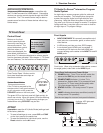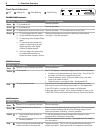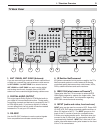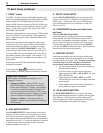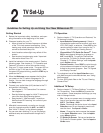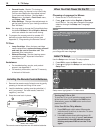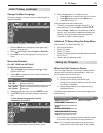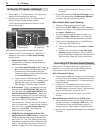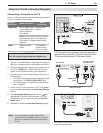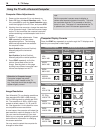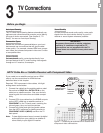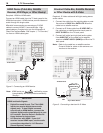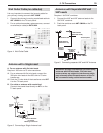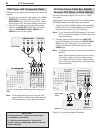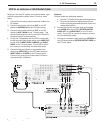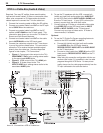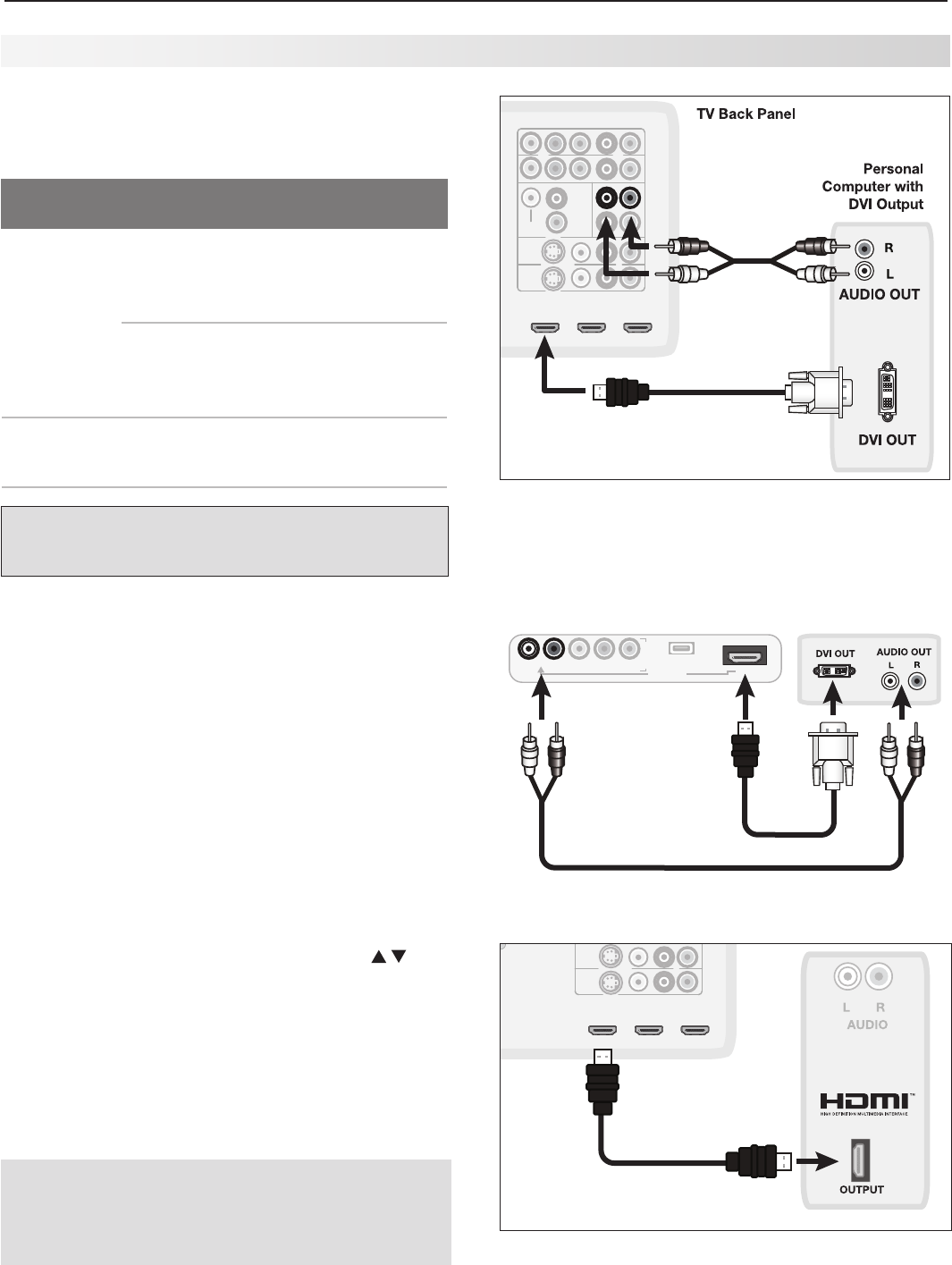
2. TV Setup 15
Connecting a Computer to the TV
Use one of the connection methods listed below based
on your computer’s video output.
Computer
Video Output
Video Connection
Audio
Connection
Digital DVI DVI-to-HDMI cable
or an HDMI cable
with an HDMI-to-
DVI adapter
Stereo audio
cables
Note: If the computer’s audio output
is a single mini jack, a mini audio-to-
RCA-male “Y” adapter cable is also
required.
HDMI HDMI-to-HDMI
cable
No additional
audio connec-
tion is required.
IMPORTANT
This TV accepts digital computer signals only.
1. See the TV specifications in Appendix A to confirm
that your computer signal is compatible with the TV.
2. Connect the computer’s digital signal output to one
of the TV’s
HDMI
jacks. See the connection dia-
grams for the method suited to your equipment.
3. Connect the computer’s audio output using one of
these options:
• For digital DVI signals, connect analog left/right
audio to the TV’s
DVI/PC AUDIO INPUT
jack.
• For HDMI signals, no additional audio connec-
tion is required.
4. Power on the TV and computer. The TV will detect
the connection and display the Auto Input Sensing
screen.
5. In the Auto Input Sensing screen, press to
highlight PC in the list of device types. You can
change the type at a later time using the Inputs >
Name menu.
6. Press
EXIT
to close the Auto Input Sensing screen.
)%.*UP%7*$BCMF
COMPONENT 1
Y Pb Pr (480i/480p/720p/1080i)
COMPONENT 2
RECORD
OUTPUT
OUTPUT
DIGITAL
IR EMITTER
NetCommand
RS-232C
ANT 1 /
MAIN
ANT 2 /
AUX
AUDIO
INPUT 1
INPUT 2
HDMI
VIDEO: 480i / 480p / 720p /
1080i / 1080p
W-SVGA, XGA, W-XGA,
AUDIO: LINEAR PCM
PC: VGA, W-VGA, SVGA,
1
(LEFT) ,, 2 (MIDDLE) 3 (RIGHT)
DVI / PC
VIDEO
AUDIO-
AUDIO-
RIGHT
L (MONO)
INPUT
AVR
AUDIO
AUDIO
OUTPUT
S-VIDEO VIDEO - AUDIO - R
L (MONO)
- AUDIO - R
Y Pb Pr
EMITTER
3D GLASSES
IEEE 1394
SXGA / 720p / 1080p
LEFT
DVI / PC
INPUT
AUDIO
4UFSFP"VEJP$BCMF
A DVI connection from a personal computer requires a
separate audio connection. Computer connected to the
TV back panel (above) and TV front panel (below).
I
N
P
U
T
L-AUDIO-R
VIDEO/Y
Pb
Pr
3
USB
HDMI 4
DVI AUDIO
HDMI 4
L-AUDIO-R
4UFSFP"VEJP$BCMF
57'SPOU1BOFM
1FSTPOBM$PNVUFS
XJUI%7*0VUQVU
)%.*UP%7*
$BCMF
1FSTPOBM
$PNQVUFSXJUI
)%.*0VUQVU
COMPONENT 1
Y Pb Pr (480i/480p/720p/1080i)
COMPONENT 2
RECORD
OUTPUT
OUTPUT
DIGITAL
IR EMITTER
NetCommand
RS-232C
ANT 1 /
MAIN
ANT 2 /
AUX
AUDIO
INPUT 1
INPUT 2
HDMI
VIDEO: 480i / 480p / 720p /
1080i / 1080p
W-SVGA, XGA, W-XGA,
AUDIO: LINEAR PCM
PC: VGA, W-VGA, SVGA,
1
(LEFT) ,, 2 (MIDDLE) 3 (RIGHT)
DVI / PC
VIDEO
AUDIO-
AUDIO-
RIGHT
L (MONO)
INPUT
AVR
AUDIO
AUDIO
OUTPUT
S-VIDEO VIDEO - AUDIO - R
L (MONO)
- AUDIO - R
Y Pb Pr
EMITTER
3D GLASSES
IEEE 1394
LEFT
SXGA / 720p / 1080p
DVI / PC
INPUT
AUDIO
57#BDL1BOFM
An HDMI-to-HDMI connection carries all video and
audio on a single cable.
Note: If your computer provides digital audio
output (coaxial or digital), you can connect it
directly to a digital A/V receiver and bypass
the TV.
Using the TV with a Personal Computer



